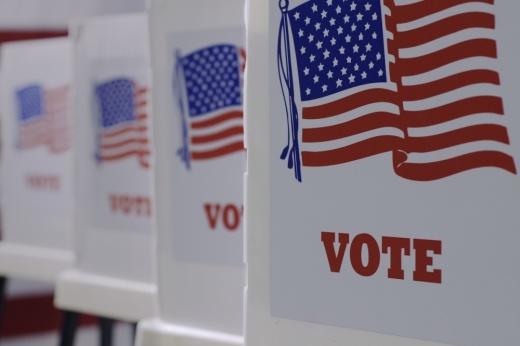Registered voters can vote early from Oct. 21-Nov. 1, and certain eligible voters have until Oct. 25 to apply to get an absentee ballot sent to them in time to cast their vote via mail.
According to the Texas Secretary of State, more than 17 million people were registered to vote statewide as of March.
On the ballot
While the presidential election is at the top of the ballot, Texans will also get to vote for a U.S. senator, Supreme Court of Texas judges, Texas Court of Criminal Appeals positions, a state railroad commissioner, and other state and local races.
Ahead of the 89th Texas Legislature convening in January, 15 of the 31 Texas Senate seats and all 150 Texas House seats are up for election.
Additionally, several communities across the state will have county, city and school district elections on the ballot as well.
For more information regarding the upcoming election, visit Community Impact’s voter guide at www.communityimpact.com/voter-guide.
Another detail
To be eligible to vote via mail in Texas, registered voters must qualify under the following criteria:
- 65 years of age or older
- Sick or disabled
- Out of the county on Election Day or during the period for early voting in person
- Expected to give birth three weeks before or after Election Day
- In jail but otherwise eligible to vote
Voters can track their ballots sent by mail here.
What you need to know
During early voting, Texans can vote at any polling location within the county in which they are registered. Registered voters can search for polling places either through the state’s voter portal or can contact their local election clerk.
Voters must bring at least one of the seven following forms of identification to the polls:
- A Texas driver’s license (issued by the Texas Department of Public Safety)
- A Texas personal ID card (issued by the DPS)
- A Texas handgun license (issued by the DPS)
- A Texas election ID certificate (issued by the DPS)
- A U.S. military ID card with the voter’s photograph
- A U.S. citizenship certificate with the voter’s photograph
- A U.S. passport
- A U.S. birth certificate or a document confirming the birth that is admissible in court establishing the voter’s identity
- A copy or original government document that shows the voter’s name and address, including the voter’s registration certificate
- A copy or original utility bill or bank statement
- A copy or original government check or paycheck
Also of note
Voters can bring written materials such as notes or a sample ballot with them to the polls.
However, cell phones and other electronic devices that can wirelessly communicate are not allowed within 100 feet of voting stations. Each polling station will have a distance marker.
Within that 100-foot radius, no one is allowed to post, use or distribute any political signs or literature relating to a candidate, political party or any ballot measures.
Additionally, in Texas, a voter cannot wear clothes, accessories or communicative devices that have relevance to a political candidate or party. Voters may be asked to remove or cover up the apparel if anyone violates this law before entering the building to vote.
Guns are not allowed at polling locations.
Did you know?
Texas requires all polling locations to comply with accessibility requirements for disabled voters. In 1999, Texas became the first state to require accessible voting equipment, according to the Texas Secretary of State.
Under a recent Texas law, each polling location must have at least one parking space for voters unable to enter the building due to injury, disability or illness, where they can cast their ballots curbside. Additionally, voters with disabilities can also skip lines at polling stations to cast their ballot.
Furthermore, voters can use interpreters at the polling station to help with their ballots and can request assistance to fill out their ballot.
Voters are not required to prove their disability to request assistance. To learn more about the provisions available, visit the Texas Secretary of State’s website.





